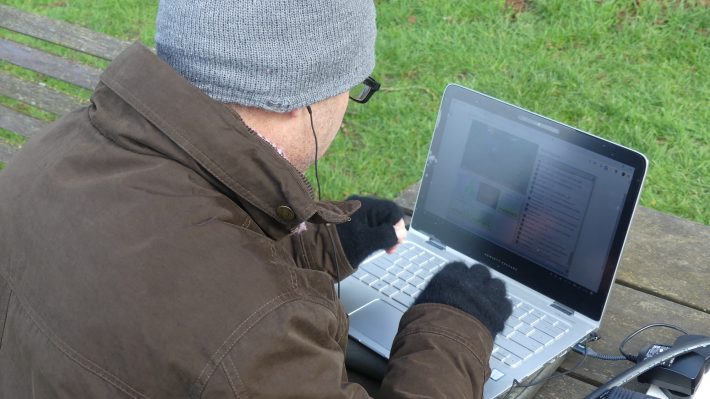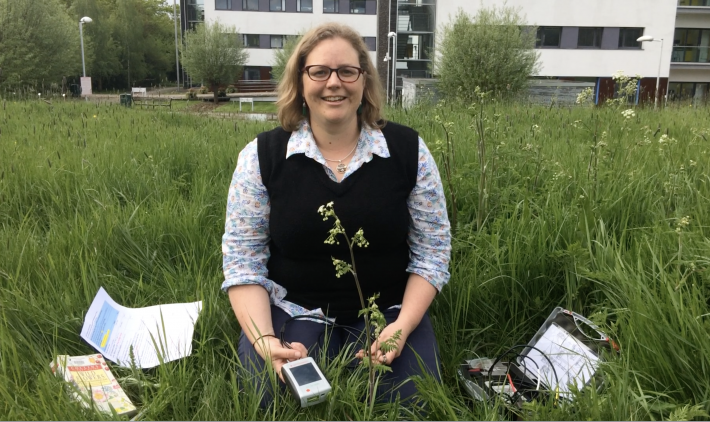15 practical tips for online teaching
COVID-19 has pushed many very quickly to delivering teaching online. Drs Julia Cooke, Phil Wheeler and Sarah Davies are Senior Lecturers in Ecology and Environmental Sciences at The Open University and have a wealth of experience in online distance education. Here are their 15 top tips for pivoting teaching online during COVID-19.

1. Use existing resources
While many people in academia have had to switch rapidly to online delivery to complete their courses, it is important to remember not all content has to be created from scratch; it makes sense now to incorporate existing assets produced or suitable for distance learning. Finding the most appropriate can be time consuming so some suggestions are at the bottom of the page.
2. Teach together
A live online session means delivering content plus managing technical issues and chat box questions, which can be tough for just one teacher. Working in pairs, one person can focus on presenting while another helps students with software and questions. The increased quality of teaching and stress reduction is worth the additional time. It can feel excessive if students are quiet, but dual presenting is also an opportunity for peer observation and support and sharing your new teaching practice.

3. Record sessions
Students may not be able to attend scheduled live classes if they were not expecting to study online or have new obligations because of COVID-19. Recording sessions enables students to view or replay content in their own time (asynchronous study). Remember to inform attending students that the session will be recorded. Pre-recording lectures or tutorials allows editing, but students should have the opportunity to ask questions and discuss content during the live delivery and when viewing replays. Students viewing recordings may dwell on what you say, so be consistent and precise.
4. Anticipate limited internet and technological know-how
Without campus access, students may have limited internet and computer capacity. Learning to use new platforms can also be a challenge and take time and expect students to be using different devices (e.g. laptops, desktops, tablets and phones) with multiple operating systems and browsers. To avoid disadvantaging some students, keep key course content and resources simple and limit activities that require prolonged high-speed internet.
5. Focus on key content
For teachers, the (sudden) switch to online delivery means extra work. For students, reading or watching videos online, whether working with hastily assembled content or concise, highly produced resources, will also take additional time. Identify and highlight essential content versus wider context or additional material. Focus both your efforts and students’ attention on the key content.
6. Be clear and correct
Students studying by distance quickly disengage if they become frustrated due to errors and ambiguous instruction. With fixed resources (e.g. documents, recordings), students are more likely to assume they misunderstand than guess there’s a mistake. Even with corrections, the hours lost can dissuade students. Less opportunity for teachers to gauge student understanding and immediately adjust compounds problems. Find a ‘critical friend’ to review content, before distributing materials (then return the favour).
7. Be accessible and inclusive
Students may need aids or adjustments to help with reading or to understand recordings, so forget fancy fonts and colours and ask students which formats work best. Enabling captions and providing image descriptions increases accessibility.
8. Become part of a community
Use technology to overcome isolation, support social learning and encourage direct interaction. Aim for a sense of working together with your students and your colleagues but provide both group and confidential channels. Disseminate a clear communication strategy for efficiency, to ensure key messages get through and avoid duplication. Be clear about staff availability and reasonable response times and encourage and display empathy as people behave differently when not face to face.
9. Be creative and break it up
Maintaining focus when studying online and alone is hard, so make your teaching personal, vary the pace and use conversational language to help keep sessions lively and engaging. Use video, audio, news articles, cartoons, online databases and incorporate various types of media and content to add interest and allow students to explore.
10. Be authentic
It can be tempting to create artificial situations or data for online activities, but students engage better with real-life (authentic) content. Provide online access to real equipment or experiments where possible or use genuine examples or data to recreate lab or field experiments in a digital space.
11. Fieldwork alternatives are possible when necessary
Ecology teachers agree that nothing replaces field experience for students, but online options can be valuable to build confidence, increase accessibility or when fieldtrips really are impossible. Possibilities include students completing fieldwork in their own locale, virtual reality field sites (e.g. virtual Skiddaw shown in this video) and live, interactive links to people in the field (e.g. fieldcasts).

12. Think about yourself
People who teach face-to-face are usually motivated by the personal contact with their students. Teaching online can feel like talking into a vacuum. Find ways to keep yourself motivated, such as the opportunity to finesse a problematic session, or the reward from developing a new skill for online teaching.
13. Become a super reflector
A big part of classroom dynamic is the immediate, visual feedback with your audience. It can be motivating or dispiriting, but helps you check how you are doing and adjust your teaching to your audience. It’s vital to develop the ability to reflect on your own work and to accommodate constructive criticism from colleagues. Be prepared for some things to not work, even if you have put a lot of time into them.
14. Course design is key
A strong, logical and thoughtful course design is just as important in online learning. Determine what the students need to know, how to develop skills and knowledge over time, and appropriate assessment to test learning outcomes. The references below by Laurillard et al. are a useful place to learn more for distance learning.
15. Work with online specialists
Conventional university teaching is delivered in custom built facilities, with trained technical/field staff and professionally produced texts and websites. Academics producing and delivering online teaching materials longer term will need additional training and support from other different professionals than for face-to-face teaching. To move curricula wholly online over the long term would need large-scale institutional change; academics shouldn’t be expected to add multiple new strings to their bows and excel at them all.
Online ecology resources for teaching
A range of free courses relating to nature and the environment from The Open University
Live field broadcasts from the Field Studies Council #Fieldworklive (KS2-5)
Natural History Illustration course from Newcastle University, Australia
Live feeds of wildlife (African animals and sharks on Explore.org and Badger cam as examples)
Virtual reality fieldwork area of glaciers and glaciated landscapes from University of Worchester
Data repositories (Dryad and UK phenology data from Woodland Trust/CEH Nature’s Calendar as examples)
Paid short courses relating to nature and the environment from Future Learn
Other resources
https://www.futurelearn.com/courses/teach-online
https://www.open.edu/openlearncreate/
https://philonedtech.com/revised-outlook-for-higher-eds-online-response-to-covid-19/
https://www.edx.org/course/pivoting-to-online-teaching-research-and-practitioner-perspectives
http://www.open.ac.uk/blogs/design/distance-and-online-design-education-a-not-so-quick-introduction/
Shiny showcase (can be used to make online interactive activities to explore data)
Laurillard, D., Kennedy, E., Charlton, P., Wild, J. and Dimakopoulos, D., 2018. Using technology to develop teachers as designers of TEL: Evaluating the learning designer. British Journal of Educational Technology, 49(6), pp.1044-1058.
Like what we stand for?
Support our mission and help develop the next generation of ecologists by donating to the British Ecological Society.